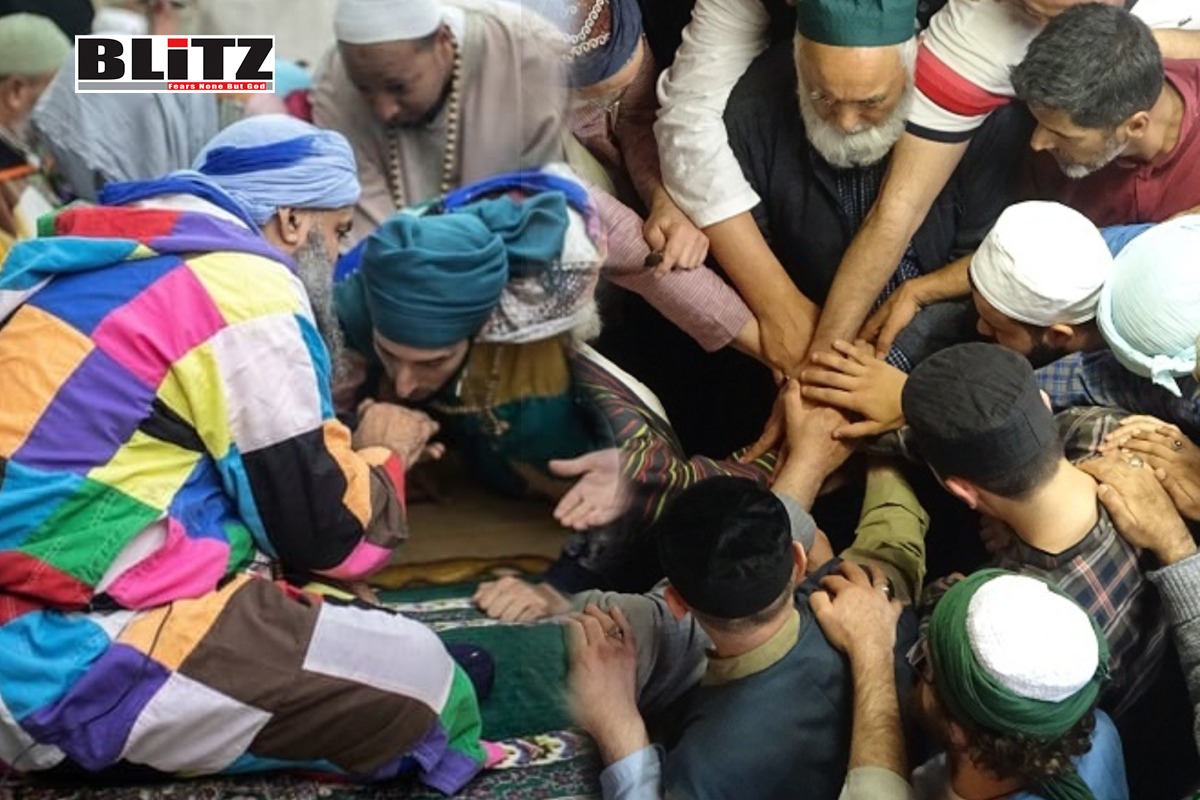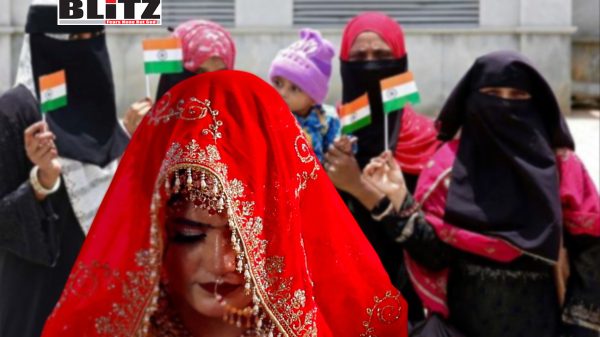Sufi conversions in Bengal and Kashmir: Nothing peaceful about them
- Update Time : Sunday, August 25, 2024

There are no historical records that support the claim that Sufis converted non-Muslims to Islam in large numbers in peaceful ways. Instead, a look at history shows that majority of the Sufis were intolerant fanatics, and supported Jihad.
There is a belief among few scholars that while many Sufis propagated Islam through violent ways, in Bengal (West Bengal and Bangladesh), Sufis spread Islam through peaceful means, leading to mass conversions, especially in eastern Bengal which is now Bangladesh. This mindset is evident when we come across Nehemia Levtzion’s claim that “Sufis were particularly important in achieving the almost total conversion in eastern Bengal.” (refer: “Toward a Comparative Study of Islamization, in Conversion to Islam,”1979, p.18).
A close study of the two most famous Sufi saints of Bengal gives us a clear picture of how Sufis propagated Islam, and how the process was anything but peaceful. Jalaluddin Tabrizi and Shah Jalal, were the two famous Sufi saints of Bengal from the first half of 14th century. Jalaluddin Tabrizi came to Bengal after Bakhtiyar Khilji invaded Bengal in 1205, and settled in Devtala near Pandua in West Bengal. Here it is said that he “converted large number of Kafirs” to Islam, but how he made the conversions remains unknown. As per Syed Athar Abbas Rizvi, “a kafir had erected a large temple and a well (at Devtala). The Sheikh demolished the temple and constructed a takiya (khanqah)…” (refer: “A History of Sufism in India,” 1978, Vol. I, p. 201). For the Sufis, building of their dargahs/khanqahs at the very site of the temples they destroyed, was a way to show their contempt and dominance over the Hindus. This also gives a clear hint of the violent means adopted by Jalaluddin Tabrizi in converting the ‘kafirs’ to Islam.
Shah Jalal, the other well-known Sufi pir of Bengal, had settled in Sylhet (now Bangladesh), and is currently regarded as a great hero by Bangladeshi Muslims. When Shah Jalal came to settle in Sylhet, it was under the control of a Hindu raja, named Gaur Govinda. Before Shah Jalal’s arrival in Bengal, Sultan Shamsuddin Firuz Shah of Gaur had already attacked Raja Gaur Govinda twice to get rid of the kafir king. On both occasions, Raja Gaur Govinda defeated the Muslim invaders. The local history records tell us that the excuse used by the Muslim sultan to attack Raja Gaur Govinda twice, was because the latter had punished one Sheikh Burhanuddin and his son for killing a cow and placing the cow-meat on the king’s temple.
The third attack against Raja Gaur Govinda took place under the sultan’s Chief General Nasiruddin, and it was at this time that Nizamuddin Auliya sent his disciple Shah Jalal with 360 other followers to take part in this Jihad campaign against a Hindu king. In the fierce battle that followed, Raja Gaur Govinda was defeated, and the win was credited to the Sufi saint Shah Jalal. Shah Jalal immediately began proselytizing in Sylhet, by converting many kafirs at the point of the sword, who had been captured in the war and forced into slavery.
In another incident, a Sufi saint Nur Qutb-i-Alam played an important part in converting a high-profile name in Bengal. In 1414, Ganesha, a Hindu prince, revolted against Muslim dominion and captured power. The sudden taking over of the power by a Hindu king created strong waves of hatred within the Sufis and the Ulema. To end this takeover by a Hindu kafir king, they requested help from Muslim rulers outside Bengal, and Ibrahim Shah Sharqi of Jaunpur responded to the calls, and decided to invade Bengal, however he faced resistance from the Mithila king on the way. Meanwhile facing the threat of an Islamic invasion, Raja Ganesha asked Sufi pir Nur Qutb-i-Alam, to step in as a peace broker. Nur Qutb-i-Alam agreed on the conditions that Ganesha would abdicate in favour of his twelve-year-old son Jadu, who would be converted to Islam and made made the ruler as Sultan Jalaluddin Muhammad (1415 CE).
When Nur Qutb-i-Alam died in 1416, Jalaluddin was removed from the throne and reconverted to Hinduism by his father Ganesha. However, the Sufi brainwashing had been so strong that Jalaluddin again converted to Islam, and started his second phase of ruling in 1418. The Sufis had brainwashed Jalaluddin so effectively that he became a fanatic Muslim, and resorted to mass conversions through vandalism and extreme violence, which is recorded in the Cambridge History of India, as ‘a wave of conversions in the reign of Jalaluddin Muhammad (1414–31).’ Regarding Jalaluddin, Dr James Wise wrote in the Journal of the Asiatic Society of Bengal (1894) that, “the only condition he offered was the Koran or death… many Hindus fled to Kamrup and the jungles of Assam, but it is nevertheless possible that more Mohammedans were added to Islam during these seventeen years (1414–31) than in the next three hundred years” (refer: Lal KS, “Indian Muslims: Who are They, Voice of India,” 1990, p. 5).
The Sufis in Bengal, thus, played a major role in converting the Hindus and Buddhists to Islam, toeing the “orthodox” line. The Sufis of Bengal were strict followers of orthodox Islamic doctrines, hence they made no theological compromises or followed a peaceful process of persuading the people to convert, as orthodoxy demanded the use of brute force during conversions of kafirs (refer: Ishtiaq Hussain Qureishi, “The Muslim Community of the Indo-Pakistan Subcontinent (610–1947),” 1962). Ishtiaq Qureishi hints at the orthodoxy of Bengal Sufis when he said, “They established their khanaqahs and shrines at places, which already had a reputation for sanctity before Islam [older Hindu temples];” a clear reference to the practice of establishing Sufi khanqahs after destroying Hindu or Buddhist temples. This also helped in the conversion of the native kafirs, as temples got replaced with dargahs and khanqahs. While it sounds incredulous, it is indeed true that in many instances Hindus and other Indics have welcomed the foreign Muslims, allowing them to settle among them peacefully. However, the Hindus also have a history of revolting against the foreign and converted Muslims, when the latter attacked their religion. The Muslim invaders-rulers faced constant rebellion and wars for their repeated attacks on temples and Hindu culture. Muslim attacks on temples and shrines, and converting those to mosques and khanqahs had undoubtedly created among the Hindus and other Indics a feeling of revulsion and an unfavorable impression toward Islam.
Conversion by Sufis in Kashmir
Two Persian chronicles, Baharistan-i-Shahi and Tarikh-iKashmir provide detailed accounts of Sufi led conversions of Hindus to Islam in Kashmir. The most famous Sufi saint of Kashmir was Amir Shamsud-Din Muhammad Iraqi, who was associated with the administrator of Kashmir, Malik Musa Raina (1501). With the support of Malik Raina, Amir Shamsud-Din Muhammad Iraqi unleashed a reign of terror, where he not only destroyed all Hindu temples he could lay his eyes on, but he also attacked the very foundation of Hinduism in Kashmir. Muhammad Iraqi ordered mosques to be constructed on all the temple sites that he destroyed. As the 16th century written Tarikh-i-Kashmir, a historical account of Kashmir by Haidar Malik Chadurah, tells us: “Sheikh Shams-ud-Din reached Kashmir [and]began destroying the places of worship and the temples of the Hindus.” (refer: Chadurah HM, “Tarikh-Kashmir,” 1991, pp. 102–03).
Similarly, a chronicle named Tohfat-ul-Ahbab, also tells us that “on the instance of Shamsud-Din Iraqi, Musa Raina had issued orders that everyday 1,500 to 2,000 infidels be brought to the doorstep of Mir Shamsud-Din by his followers. They would remove their sacred thread (zunnar), administer Kelima to them, circumcise them, and make them eat beef.” Tarikh-i-Hasan Khuiihami while talking of the conversion of Hindus by Shamsud-Din Iraqi tells us, “twenty-four thousand Hindu families were converted to Iraqi’s faith by force and compulsion (qahran wa jabran)” (refer; Pundit KN, “A Chronicle of Medieval Kashmir,” 1991, pp. 105-06).
In 1519, under command from Amir Shamsud-Din Muhammad Iraqi, Malik Kaji Chak, a high-ranking military commander, undertook the massive massacre of Hindus and other Indics in Kashmir (as recorded in Baharistan-i-Shahi). Later many of those forcefully converted to Islam during the reign of Malik Raina, reverted to Hinduism. To counter the revert backs, a rumour was spread that those going back to Hinduism were placing the Quran under their haunches and sitting on it. With this story, the Sufi saint went to Malik Kaji Chak demanding suitable punishment in accordance to Sharia. Here the Sufi saint’s main grouse was not the supposed insult of the Quran, but the return of the converted lot to Hinduism. To please the Sufi saint, Malik Kaji Chak then decided to launch a wholesale massacre of the kafirs (Baharistan-i-Shahi). This massacre was planned to be carried out on the holy Ashura (Muharram, 1518 CE), and on that day around 700-800 hundred Hindus were killed, and the famous Hindu names were especially targeted. After this incident, many Hindus and other Indics in Kashmir were forced to convert to Islam under severe persecution, and this is counted as one of the major achievements of Malik Kaji Chak (Baharistan-i-Shahi).
Another Sufi worth mentioning is Sayyid Ali Hamdani, who had arrived in Kashmir sometime between 1371 and 1381. Before his arrival, the reigning Sultan Qutbud-Din did ot enforce the Islamic religious laws, and the Muslims (from rulers to qazis) generally did not pay much attention to the Islam laws. However, this was soon to change. The first thing Sayyid Ali Hamdani did on arrival was to destroy a small temple and build a khanqah on that site.
Shocked at the ‘unIslamic practices of Kashmiri Muslims,’ Sayyid Hamdani tried his best to bring in orthodoxy, however the reigning Sultan Qutbud-Din did not cooperate to a great extent. Refusing to live in a land that was dominated by Hindu religion and culture, the Sufi Sayyid Hamdani left Kashmir in a rage. Later, his son Amir Sayyid Muhammad, another Sufi saint, came during the reign of Sikandar Butshikan (the idol breaker). The partnership of Sayyid Muhammad and Sikandar Butshikan succeeded in almost wiping out Hinduism from Kashmir.
Sufism in India had always promoted and propagated conversions to Islam through extreme violent means. More often than not the Sufi saints would instigate the Muslim rulers and Muslim army commanders against the native Hindus on religious grounds, and lead them to launch widespread massacres of ‘kafirs’ and destruction of temples; after which the Sufi saints would then start their work of converting the remaining Hindus and other Indics.














